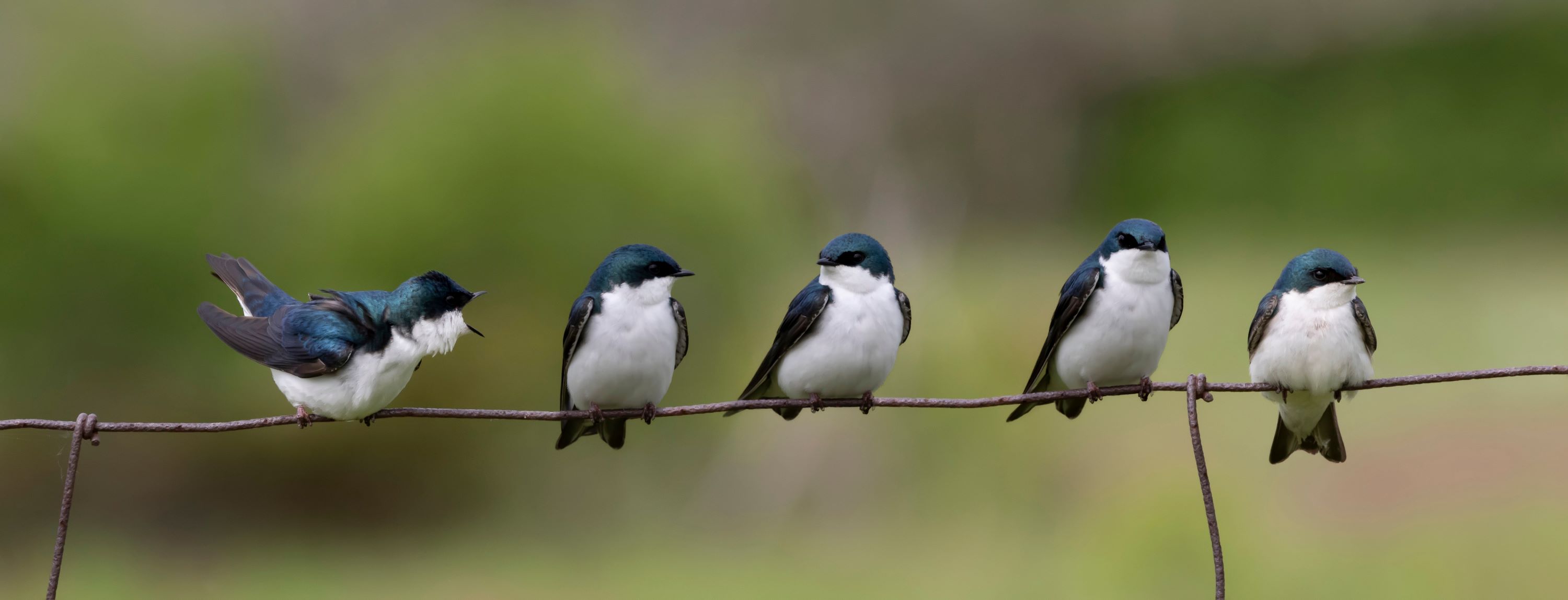
Winged Wonders: The Fascinating World of Birds and Their Evolution
Aves, commonly known as birds, represent a diverse and dynamic class of warm-blooded vertebrates that are characterized by their feathers, beak with no teeth, and a high metabolic rate. This class encompasses an extraordinary variety of species, ranging from the tiny hummingbird to the majestic ostrich. There are approximately 10,000 known species of birds, making them the most diverse class of tetrapod vertebrates.
Birds are believed to have evolved from theropod dinosaurs during the Mesozoic Era, with the earliest known bird being the late Jurassic Archaeopteryx. This evolutionary lineage is evident in many characteristics shared between birds and certain dinosaurs, including similar bone structures and, in some cases, the presence of feathers. The adaptation of flight has been a significant evolutionary step for birds, with their lightweight, aerodynamic bodies, hollow bones, and powerful flight muscles facilitating this ability. However, not all bird species have retained the capacity for flight; for instance, ostriches, emus, and kiwis are examples of flightless birds that have adapted to terrestrial living.

The anatomy of birds is specialized to suit their aerial lifestyle. Feathers are one of the most distinctive features of birds, serving multiple functions including flight, temperature regulation, and display. The structure of a bird's wing is similar to the limb of a mammal, with the primary flight feathers attached to the manus (hand) and the secondary flight feathers attached to the ulna (arm). Birds' beaks and feet vary greatly between species, adapted for different feeding and ecological niches. For example, the long, slender beak of a hummingbird is suited for extracting nectar from flowers, while the strong, hooked beak of an eagle is designed for tearing flesh.
Birds have a high metabolic rate, which is necessary for sustaining flight. This high metabolism is supported by a unique respiratory system that includes air sacs and a highly efficient lung structure. Additionally, birds have a rapid and efficient digestive system to process food and convert it into energy quickly. Many bird species are highly migratory, capable of traveling thousands of miles between breeding and wintering grounds. Migration is a complex behavior that relies on birds’ remarkable navigational skills, which may include the use of the Earth's magnetic field, the sun, stars, and landmarks.

Reproduction in birds is characterized by the laying of hard-shelled eggs, which are often incubated in nests constructed with great care by one or both parents. Most bird species are socially monogamous, at least for a breeding season, but there is great diversity in mating systems across the avian world. Birds exhibit a wide range of reproductive strategies and behaviors, from the elaborate courtship dances of cranes to the cooperative breeding seen in some species of crows and parrots.
Birds play vital roles in ecosystems as pollinators, seed dispersers, predators, and prey. Their presence and behavior can be indicators of environmental health and changes. The study of birds, ornithology, not only contributes to our understanding of the natural world but also provides insights into broader ecological concepts and conservation issues.
In summary, Aves, with their diverse forms, behaviors, and ecological roles, are a fascinating and integral part of the world's biodiversity. Their evolutionary history, from theropod dinosaurs to the present array of species, is a testament to the dynamic nature of life on Earth. Birds connect us to the natural world in myriad ways, from the practical – such as their roles in ecosystems – to the aesthetic, enriching our lives through their beauty and song. As we continue to study and understand birds, we deepen our appreciation for the complexity of life and the importance of conserving the diverse species and habitats that sustain it.

Bird Orders
The class Aves, which encompasses all modern birds, is divided into numerous orders, each representing a distinct evolutionary lineage adapted to a variety of ecological niches. The largest order, Passeriformes, includes the highly diverse perching birds or songbirds, characterized by their anisodactyl feet allowing for adept perching. This group, including familiar species like robins, sparrows, and crows, is known for its complex vocalizations and encompasses a wide range of habitats globally. Another significant order, Accipitriformes, comprises birds of prey such as eagles, hawks, and vultures, recognized for their keen eyesight and powerful talons, playing crucial roles as apex predators in various ecosystems. Anseriformes includes waterfowl like ducks, geese, and swans, adapted for aquatic life with webbed feet and waterproof feathers. The Charadriiformes order encompasses shorebirds, gulls, and their relatives, often found in coastal and freshwater environments, showcasing a wide variety of feeding and nesting behaviors. Psittaciformes, including parrots and cockatoos, are known for their bright plumage and intelligence, often exhibiting complex social structures and vocal mimicry. Strigiformes, or the owl order, consists of nocturnal birds of prey with specialized hearing and silent flight, adapted for hunting in low-light conditions. Each of these orders, along with others in the Aves class, demonstrates the remarkable adaptability and diversity of birds, illustrating a wide array of evolutionary strategies for survival and reproduction in diverse habitats across the globe.
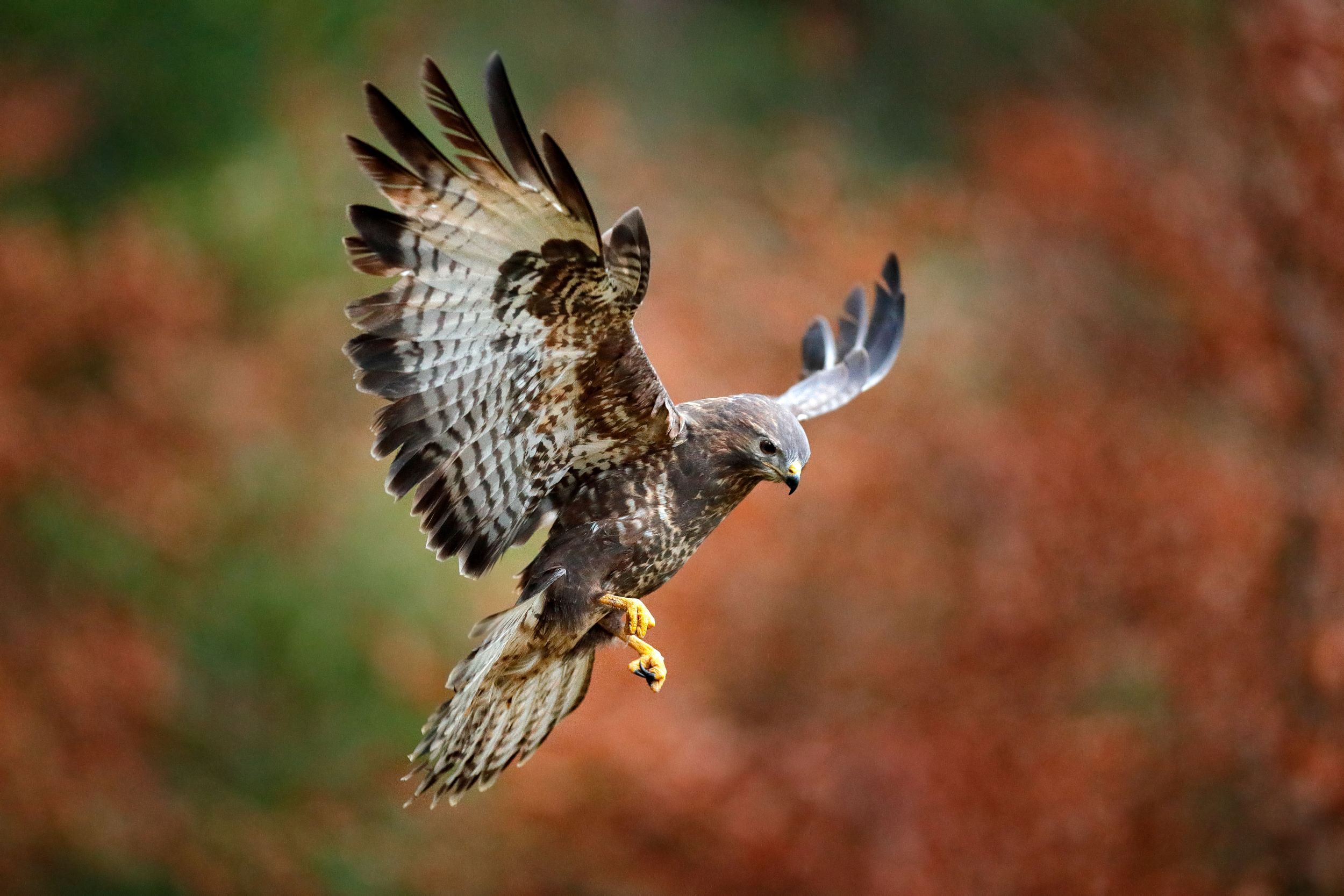
Accipitriformes
The order Accipitriformes represents a group of birds that are among the most adept predators in the avian world, encompassing species such as eagles, hawks, vultures, and kites. These birds are characterized by their powerful build, sharp talons, and hooked beaks, anatomical features that are perfectly adapted for hunting and consuming prey. Members of this order are often at the top of the food chain in their respective ecosystems, playing a critical role in maintaining ecological balance. The eyesight of Accipitriformes is exceptionally sharp, allowing them to spot prey from great distances. This keen vision is complemented by their strong, curved talons and beaks, which are used to catch and dismember prey. Different species within this order have specialized hunting techniques and prey preferences. For example, eagles are known for their strength and are capable of taking larger prey, including fish and small mammals, while kites tend to hunt on the wing, skillfully snatching prey in flight.
The diversity within Accipitriformes is remarkable, with species adapted to a wide range of habitats, from dense forests and mountains to open plains and deserts. Vultures, another key group within this order, play a unique ecological role as scavengers. They are specially adapted to feed on carrion, helping to recycle nutrients back into the ecosystem and prevent the spread of disease. Vultures have a highly acidic digestive system that allows them to safely consume decaying flesh. The social structure and behavior of Accipitriformes vary widely across species. Many are solitary or form monogamous pairs, especially during the breeding season. Their nesting habits are diverse, with some species building large nests in trees or on cliffs, while others may nest on the ground. The Accipitriformes' contribution to their ecosystems cannot be overstated. They help control populations of rodents and other small animals, thus playing a vital role in pest control. Furthermore, their presence or absence is often a key indicator of the health of the environment, making their conservation crucial for maintaining biodiversity and ecological integrity.
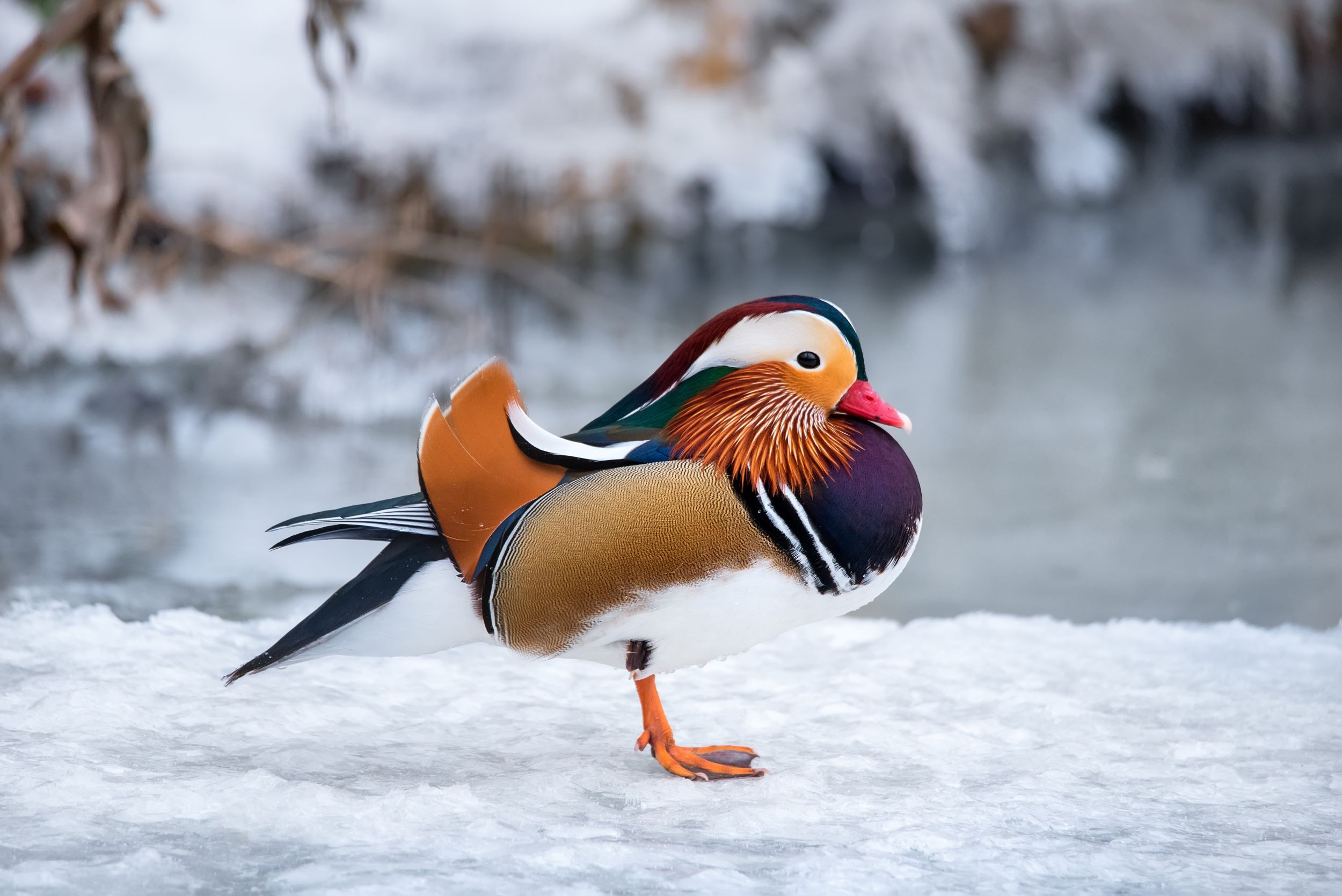
Anseriformes
The order Anseriformes, comprising primarily of waterfowl, including ducks, geese, and swans, represents a group of birds uniquely adapted to life in and around water. Members of this order are characterized by their broad, flat bills, webbed feet, and often robust bodies, which facilitate efficient movement both in water and on land. Their bills are a distinctive feature, equipped with lamellae or comb-like structures that act as a filter, allowing these birds to sift food from water and mud. This adaptation is particularly beneficial in their feeding strategies, as many Anseriformes are omnivorous, consuming a varied diet of aquatic plants, insects, small fish, and crustaceans. Their webbed feet make them powerful swimmers, adept at foraging in water. Additionally, many species within this order have a layer of waterproof feathers, maintained by preening with oil from a gland near their tails, which is crucial for their aquatic lifestyle.
Anseriformes are found in a wide range of aquatic habitats across the world, from freshwater lakes and rivers to coastal marshes and open sea. The order includes some of the most familiar and widely distributed birds, such as the Mallard and the Canada Goose. These species exhibit diverse breeding behaviors; for instance, many ducks are known for their elaborate courtship displays, which include vocalizations and physical posturing. Geese and swans, on the other hand, often form long-term monogamous pair bonds and are known for their cooperative parenting, with both parents involved in raising the offspring. The migratory patterns of Anseriformes are also notable, with many species undertaking long-distance flights to exploit seasonal food resources and favorable breeding conditions. This migration is a critical aspect of their life cycle and has ecological implications, as these birds play a role in nutrient transfer across different regions.
The Anseriformes' importance in various ecosystems cannot be overstated. They contribute to the ecological balance by controlling aquatic vegetation and serving as prey for predators. Furthermore, their migratory behavior and widespread distribution make them excellent indicators of environmental health, particularly in wetland ecosystems. Conservation efforts for Anseriformes are crucial, as their habitats are often at risk due to human activities such as land development and pollution. Protecting these birds and their habitats not only conserves biodiversity but also ensures the health and functioning of aquatic ecosystems worldwide.
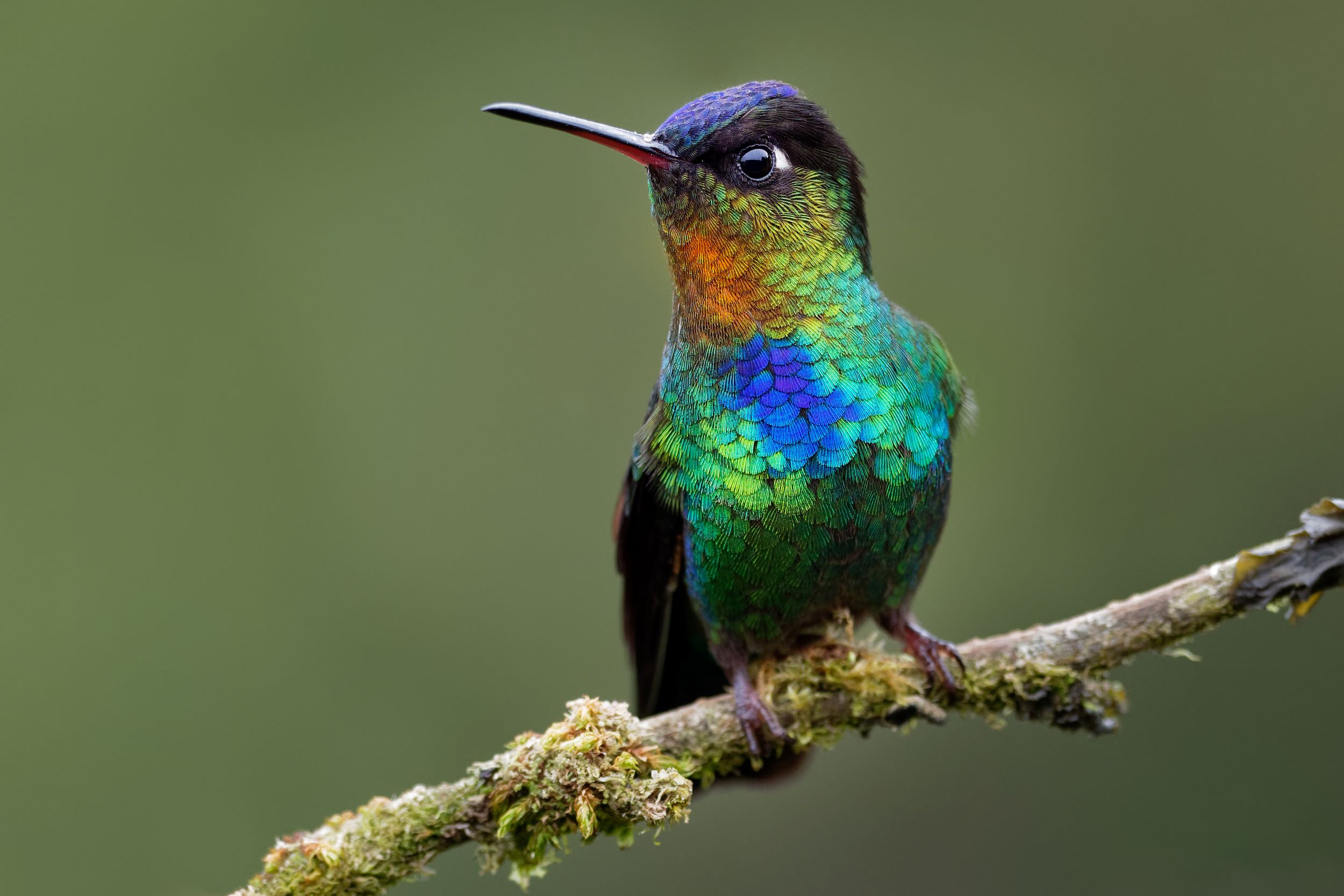
Apodiformes
The order Apodiformes, encompassing swifts and hummingbirds, represents some of the most extraordinary avian species, renowned for their remarkable aerial abilities. This order's name, derived from the Greek words "a-pous," meaning "without feet," alludes to their small, seemingly inconspicuous legs, a feature that belies their exceptional flying capabilities. Hummingbirds, particularly, are celebrated for their vibrant plumage and unique ability to hover, achieved by rapidly flapping their wings up to 80 times per second. This rapid wingbeat, along with a figure-eight wing motion, allows them to maintain a stationary position in the air, a skill unmatched in the bird world. They are also the only birds capable of flying backward, showcasing incredible maneuverability. Their long, slender beaks and specialized tongues are perfectly adapted for extracting nectar from flowers, making them vital pollinators in many ecosystems. Hummingbirds have a high metabolism to support their vigorous flight, necessitating a constant intake of food, which includes nectar as well as insects and spiders for protein.
Swifts, on the other hand, are masters of the sky, spending most of their lives airborne. They have streamlined bodies and long, narrow wings, which make them highly efficient fliers, capable of attaining great speeds and covering vast distances. Swifts are known for their aerial acrobatics, skillfully navigating through the air to catch insects on the wing. Unlike hummingbirds, swifts are not colorful; they typically have muted plumage, which provides camouflage against the sky and tree bark. Swifts rarely alight on the ground due to their relatively weak legs; instead, they cling to vertical surfaces like cliff faces or buildings. Both swifts and hummingbirds exhibit impressive migratory behaviors, with some species of swifts undertaking long-distance migrations, and hummingbirds migrating between North and South America to exploit seasonal flowering and feeding opportunities. The Apodiformes’ unique adaptations to flight not only highlight the incredible diversity of avian evolution but also underscore the importance of these birds in various ecological roles, from pollination to insect control. Their presence in diverse habitats across the globe reflects their successful adaptation to a wide range of environmental conditions, further emphasizing the ecological significance of this remarkable order.
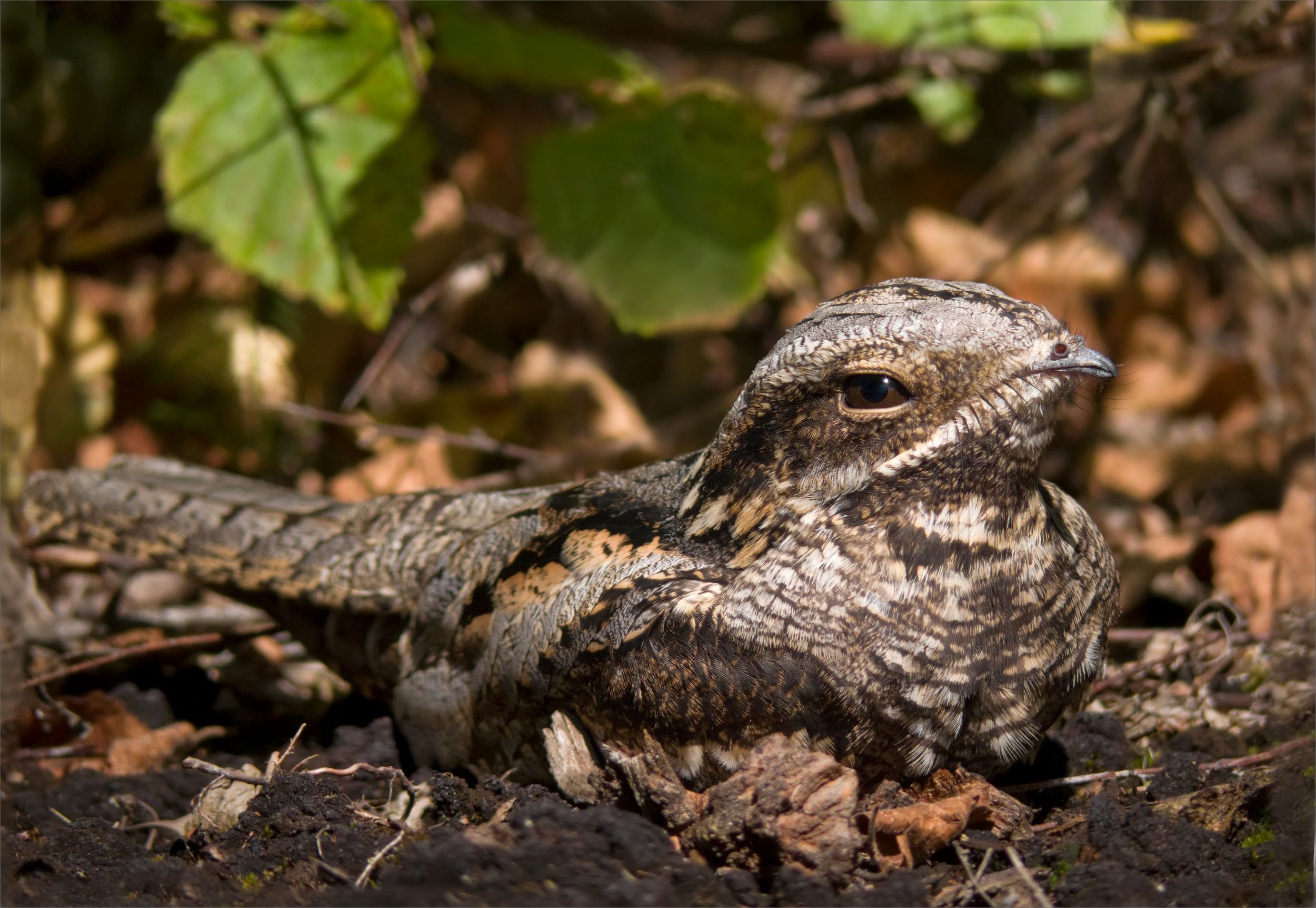
Caprimulgiformes
The order Caprimulgiformes, often referred to as nightjars or goatsuckers, encompasses a group of nocturnal or crepuscular birds renowned for their elusive nature and distinctive vocalizations. This order includes several families, such as the true nightjars (Caprimulgidae), the frogmouths (Podargidae), and the oilbirds (Steatornithidae), each exhibiting unique adaptations to their nocturnal lifestyle. Members of the Caprimulgidae family, for example, are characterized by their mottled plumage, which provides excellent camouflage against the forest floor or tree bark, aiding in their concealment during the day. These birds have large eyes, adapted for enhanced night vision, and their soft, fringed flight feathers allow for silent flight, crucial for hunting insects in the dark. The wide mouths of Caprimulgiformes are another distinctive feature, enabling them to efficiently capture prey in flight. Many species in this order are known for their mesmerizing songs and calls, often heard at dusk or dawn, which play a vital role in territorial displays and mating rituals.
Ecologically, Caprimulgiformes are significant insect controllers, feeding predominantly on moths, beetles, and other nocturnal insects. This diet places them as important regulators of insect populations in their respective ecosystems. The oilbird, unique among Caprimulgiformes, stands out for its reliance on fruit, particularly the oily fruits of the oil palm, from which it derives its name. This species is also known for its use of echolocation, a rare trait among birds, to navigate within dark caves where they roost and breed. The nesting and breeding behaviors of Caprimulgiformes are as diverse as their feeding habits. Many nightjars, for instance, do not build traditional nests but lay their eggs on the ground, relying on their cryptic plumage to protect their young from predators. In contrast, the oilbird nests in colonies within caves, with both parents sharing responsibilities for incubating eggs and feeding the chicks.
The Caprimulgiformes’ adaptations to a nocturnal existence make them less visible and, therefore, less studied than many other bird orders, adding a layer of mystery to their ecology and behavior. Conservation of these birds is challenging due to their elusive nature and the fact that their habitats—often forests, grasslands, and deserts—are increasingly threatened by human activities. Efforts to conserve Caprimulgiformes and their habitats are essential, not only for the preservation of these unique birds but also for maintaining the ecological balance in the environments they inhabit. Their presence in diverse habitats across the globe highlights the importance of nightjars and their relatives in the broader tapestry of avian biodiversity.
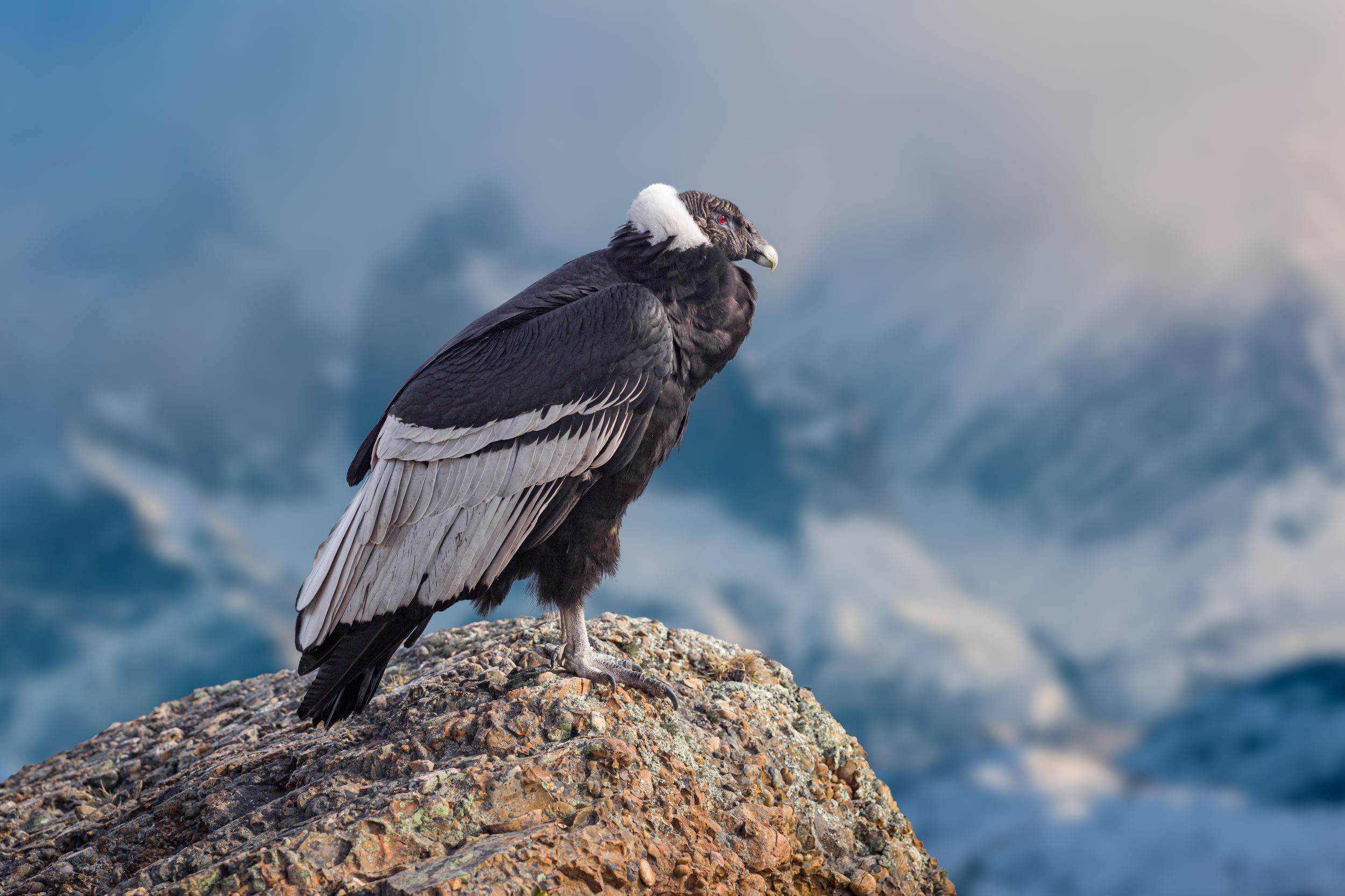
Cathartiformes
The order Cathartiformes, commonly known as New World vultures, encompasses a distinct group of scavenging birds found primarily in the Americas, from southern Canada to South America. This order includes well-known species such as the Turkey Vulture, the California Condor, and the Andean Condor. These birds are characterized by their large, broad wings, which enable them to soar effortlessly for long periods while scanning the ground for carrion, their primary food source. Their heads are typically featherless, an adaptation that helps maintain hygiene as they feed on decaying carcasses. New World vultures have a keen sense of smell, a unique trait among birds, which they use to locate carrion. This sense is especially well-developed in species like the Turkey Vulture, which can detect the scent of ethyl mercaptan, a gas produced in the early stages of decay. These birds play a crucial ecological role as scavengers, helping to clean up the environment by consuming dead animals and thereby preventing the spread of diseases.
Cathartiformes exhibit interesting social and thermoregulatory behaviors. For instance, they are often seen roosting in large communal groups, and during cool mornings, they can be observed basking in the sun with their wings spread wide, a behavior known as "horaltic pose" that helps them to warm up. Their breeding practices vary among species; some, like the Andean Condor, engage in elaborate courtship displays, including circling and diving in the air. Nesting sites are often in hard-to-reach locations, such as cliffs or tall trees, and typically, these birds lay a small clutch of eggs, usually one or two, which both parents incubate and care for. The California Condor, once on the brink of extinction with only 22 individuals remaining in the wild, has been the subject of an extensive and successful conservation and breeding program, highlighting the vulnerability of these magnificent birds to environmental changes and human activities.
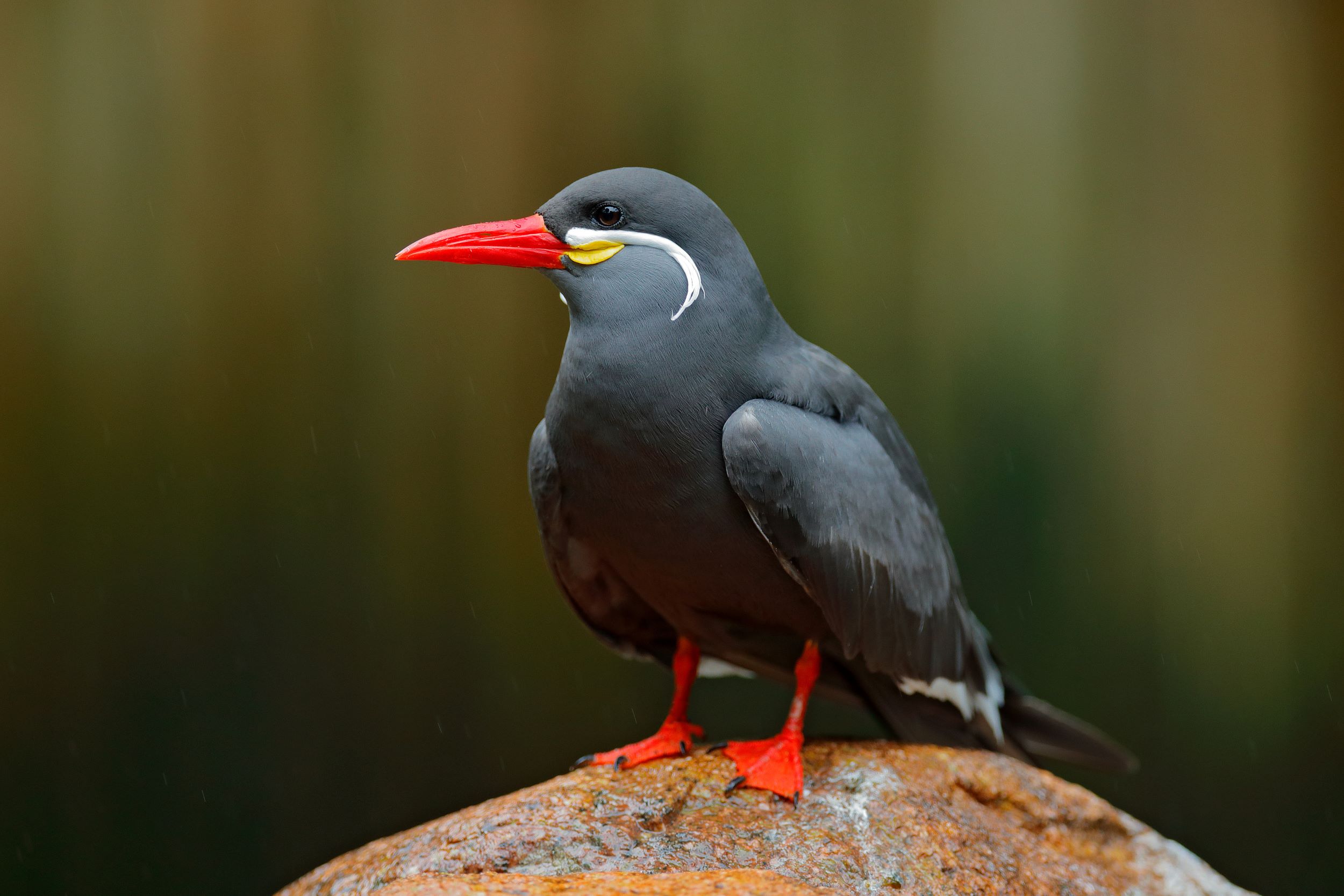
Charadriiformes
The order Charadriiformes represents a diverse group of birds commonly associated with water and shorelines, including species such as sandpipers, gulls, plovers, and terns. This order is characterized by a wide range of morphological and behavioral adaptations that suit their varied lifestyles, from the open ocean to inland waterways. Many Charadriiformes exhibit specialized feeding behaviors, such as probing mud with long bills, skimming over water surfaces, or scavenging along beaches. The members of this order display a remarkable variety in size, shape, and coloration, adapted to their specific ecological niches. For instance, sandpipers and plovers typically have long legs and beaks for wading and probing in shallow waters, while gulls and terns are equipped with robust bodies and wings suited for a life spent largely in flight, often over open water. These birds are also known for their complex social behaviors and vocalizations, which play a significant role in their breeding and territorial displays.
Charadriiformes are widely distributed across the globe, occupying a variety of habitats ranging from coastal regions to arctic tundra. Their reproductive strategies are as diverse as their habitats, with many species exhibiting elaborate courtship rituals and nesting in colonies. Some, like the terns, are long-distance migrants, traveling thousands of miles between their breeding and wintering grounds. These migrations are among the most awe-inspiring in the animal kingdom, showcasing the incredible endurance and navigational abilities of these birds. The conservation of Charadriiformes is crucial, as many species are sensitive to environmental changes, particularly those related to water quality and availability. The health of Charadriiformes populations often reflects the overall health of their aquatic ecosystems, making them important indicators of environmental quality. Threats such as habitat loss, pollution, and human disturbance pose significant challenges to their survival, emphasizing the need for targeted conservation efforts to protect these birds and their habitats. The preservation of Charadriiformes is not only vital for maintaining biodiversity but also for ensuring the continued health of the ecosystems they inhabit and the ecological services they provide.
Ciconiiformes
The order Ciconiiformes, primarily known for encompassing storks, represents a group of large, long-legged wading birds that are frequently associated with wetlands and watercourses. Storks, the most prominent members of this order, are characterized by their imposing stature, with some species standing over a meter tall, and their long necks and legs, which are well-adapted for foraging in shallow waters. They possess strong, pointed beaks that are ideal for catching fish, amphibians, and even small mammals and insects. Their plumage is generally a mix of stark whites and deep blacks, with occasional splashes of vibrant colors, such as the reddish bills and legs of the White Stork or the pinkish hue of the Roseate Spoonbill, another member of the Ciconiiformes. These birds are often seen soaring high in the sky, taking advantage of thermals to glide effortlessly over vast distances. Many species of storks are migratory, undertaking long journeys between their breeding and wintering grounds, a testament to their resilience and adaptability.
Ciconiiformes exhibit a variety of interesting behavioral and reproductive traits. For example, many stork species are known for their clattering bill displays, a form of communication that plays a role in their courtship and territorial behaviors. They often build large, sturdy nests, which they may use and rebuild over several years. These nests can be found atop trees, buildings, and other tall structures, and are a common sight in regions where storks are native. Reproduction in Ciconiiformes typically involves the laying of several eggs, with both parents sharing incubation duties and the care of the young. The parental investment in storks is considerable, with a lengthy period of feeding and nurturing the chicks until they are ready to fledge. The conservation of Ciconiiformes is increasingly important, as many species face threats from habitat loss and degradation, particularly in wetland areas. Efforts to protect and restore these vital habitats are crucial for the survival of storks and other wetland-dependent species. The presence of Ciconiiformes in folklore and culture across the world, from Europe to Africa and Asia, highlights their significance to human societies and underscores the importance of conserving these majestic birds for future generations.
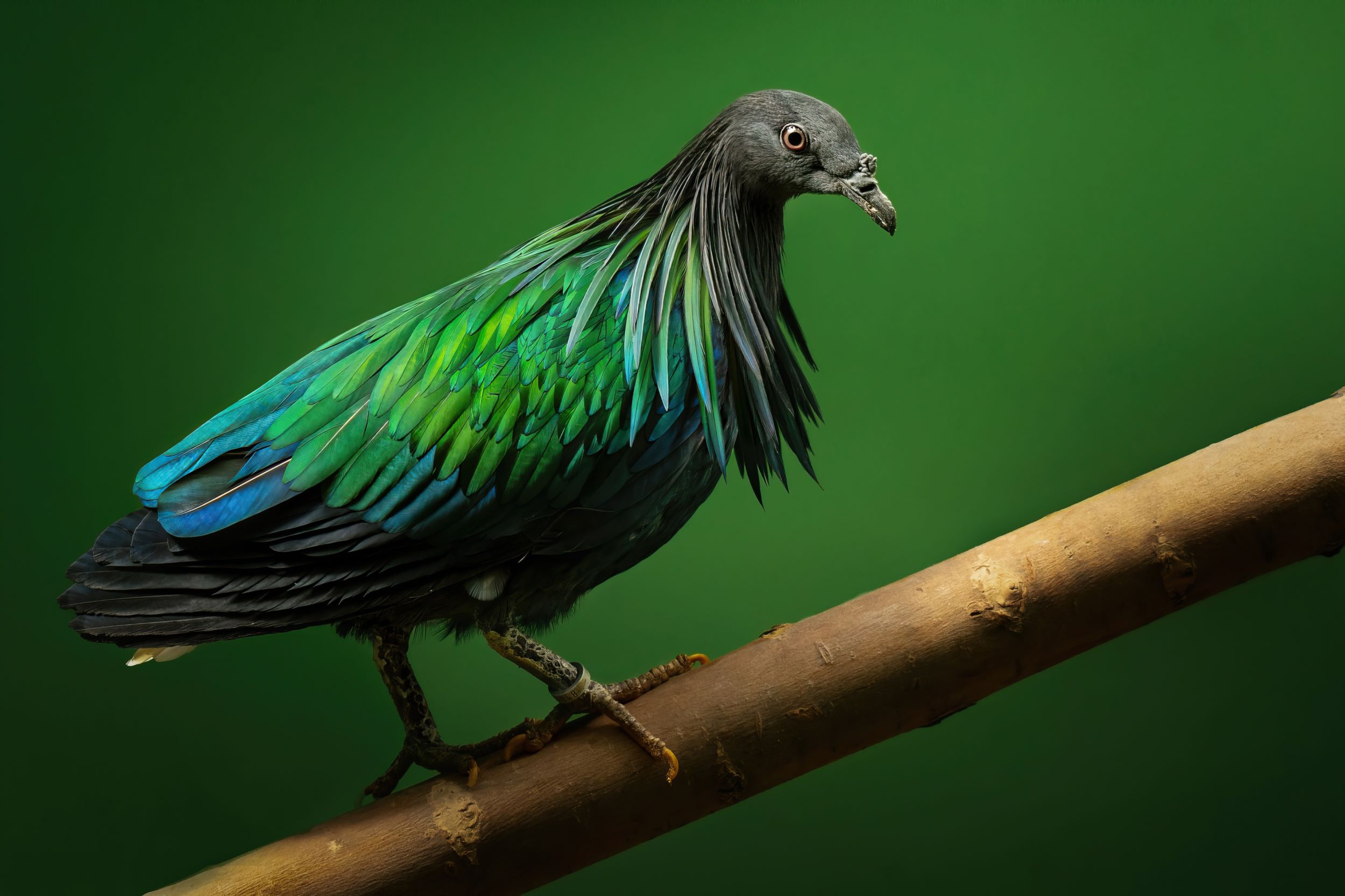
Columbiformes
The order Columbiformes, which includes pigeons and doves, represents a diverse group of birds known for their distinctive cooing calls and stout-bodied appearance. Members of this order are characterized by their small heads, short necks, and robust bodies, with a wide range of sizes from the tiny, sparrow-sized Diamond Dove to the large, crow-sized Wood Pigeon. They possess short beaks with a fleshy cere at the base, which is particularly well-developed in many species. This unique feature aids in their highly specialized feeding strategy, as Columbiformes are among the few birds that can drink water by sucking it up without needing to tilt their heads back. Their plumage ranges from the muted and camouflaged colors of many wild species to the bright and varied hues seen in domesticated and feral varieties. Pigeons and doves are found in almost every habitat on Earth, from dense rainforests and desert landscapes to urban environments, showcasing their incredible adaptability and resilience.
Behaviorally and ecologically, Columbiformes play significant roles in their environments. Many species are seed dispersers, aiding in the propagation of numerous plant species. Their diet primarily consists of seeds, fruits, and occasionally insects, making them important players in the control of weed and insect populations. In terms of reproduction, Columbiformes are known for their strong pair bonds, often mating for life. Their courtship displays include intricate rituals of cooing, bowing, and aerial displays. Nesting habits are generally simple, with nests being relatively flimsy structures made of twigs and branches. Both parents typically share in the incubation of eggs and the feeding of the young, with crop milk—a highly nutritious substance produced in their crops—being a key component of the diet for pigeon and dove chicks. The ubiquity of Columbiformes, particularly the Rock Pigeon in urban areas, has led to a diverse range of interactions with humans, ranging from their role as symbols of peace and love in various cultures to issues of overpopulation and pest control in cities. Conservation efforts for wild species of Columbiformes are crucial, as habitat loss and hunting have led to the decline of some species, while others have adapted remarkably well to urban environments, illustrating the dynamic and evolving relationship between these birds and the changing landscapes they inhabit.
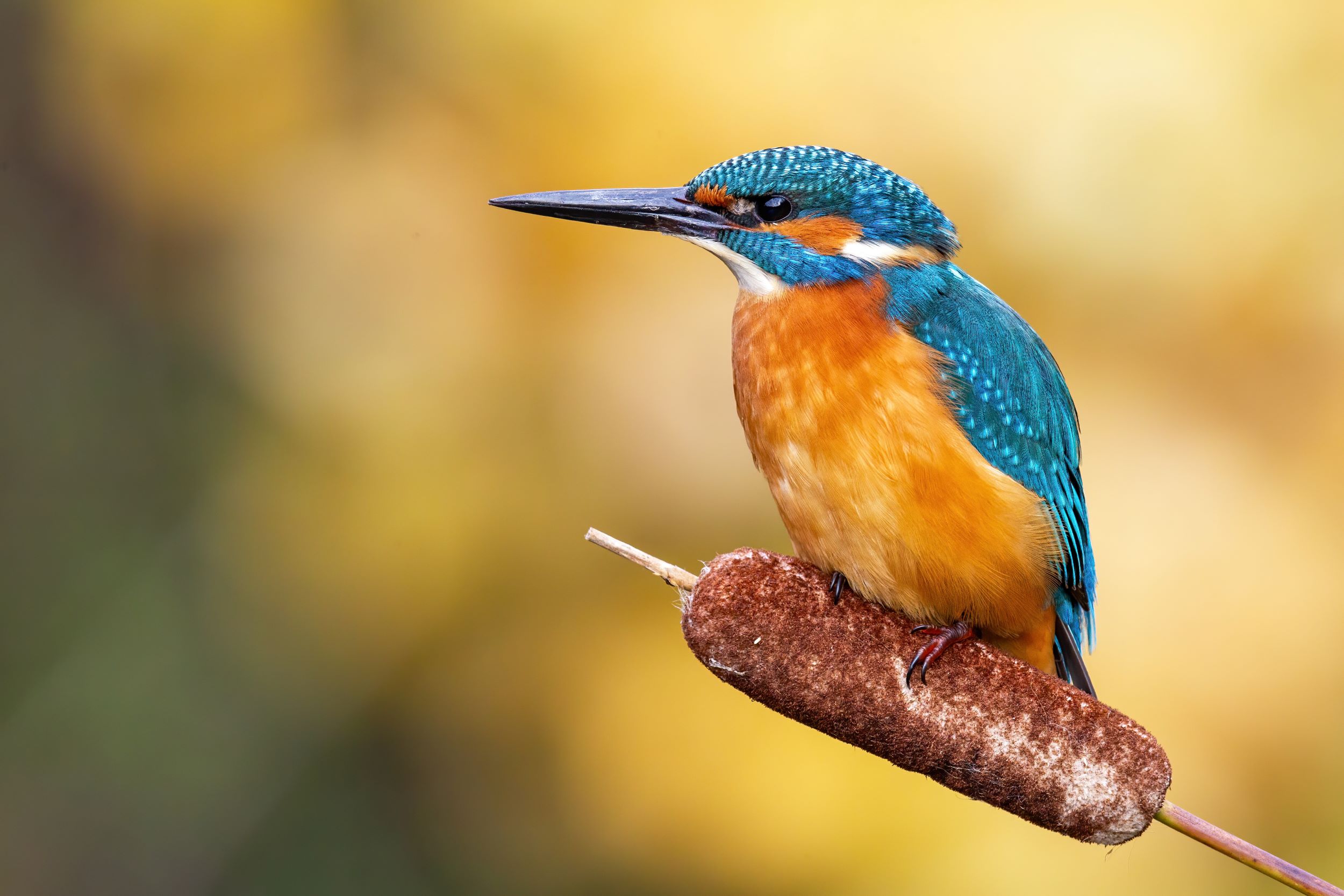
Coraciiformes
The order Coraciiformes encompasses a diverse group of colorful and charismatic birds, including kingfishers, bee-eaters, rollers, and hoopoes. These birds are renowned for their vivid plumage and specialized hunting techniques, adapted to a variety of environments across the globe. Kingfishers, perhaps the most well-known members of this order, are distinguished by their stout bodies, large heads, and long, pointed bills, ideal for fishing and hunting aquatic prey. They exhibit a dazzling array of colors, with some species like the Common Kingfisher displaying bright blue and orange hues. Bee-eaters are slender, graceful birds with long, curved bills used for catching insects in flight, often bees and wasps, which they skillfully disarm before eating. Rollers, named for their acrobatic courtship flights, boast brilliant blue, green, and purple feathers, making them some of the most striking birds in their habitats. Hoopoes, with their distinctive crown of feathers and long, tapering bills, are adept at foraging for insects on the ground. These birds are often found in open landscapes like savannas and grasslands, as well as forested areas and riverbanks, each species exploiting its niche in the ecosystem.
The behaviors and reproductive strategies of Coraciiformes are as varied as their appearances. Many species are solitary or live in pairs, especially during the breeding season, and exhibit strong territorial instincts. Their nests are often built in tree cavities, cliffs, or burrows, providing protection for eggs and chicks. The parental care in Coraciiformes is noteworthy, with both parents typically involved in incubating the eggs and feeding the young. These birds play significant roles in their ecosystems, particularly as controllers of insect populations, and some, like kingfishers, contribute to the health of aquatic ecosystems by preying on fish and other small aquatic organisms. The conservation of Coraciiformes is crucial, as their habitats are increasingly threatened by human activities such as deforestation, pollution, and climate change. Efforts to protect these birds and their habitats not only preserve the biodiversity and beauty of Coraciiformes but also ensure the ecological balance in the regions they inhabit, highlighting the interconnectedness of all life forms within an ecosystem.
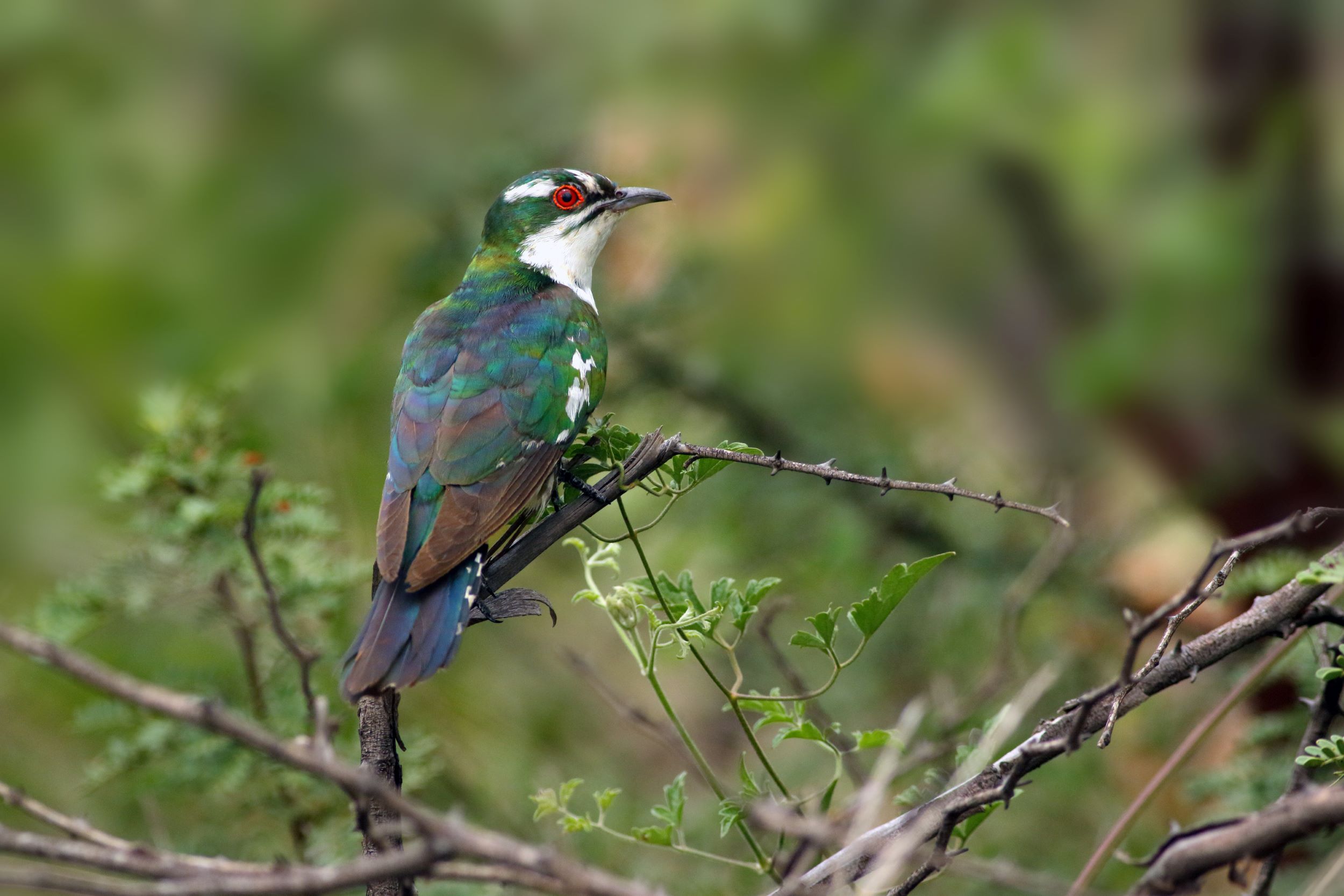
Cuculiformes
The order Cuculiformes, comprising the bird families Cuculidae (cuckoos), Musophagidae (turacos), and Opisthocomidae (hoatzin), showcases a remarkable diversity of species adapted to a wide range of habitats across the globe. Cuckoos, the most widespread and familiar of these families, are known for their diverse sizes and colors, ranging from the diminutive, subtly-colored Little Cuckoo to the striking, larger Common Cuckoo with its sleek gray and white plumage. Many species within the Cuculidae family exhibit brood parasitism, a unique reproductive strategy where they lay their eggs in the nests of other bird species, relying on the unsuspecting host to incubate their eggs and raise their young. This behavior has led to a variety of adaptations, such as egg mimicry and rapid chick development. Cuckoos are also known for their distinctive calls, which often signal the arrival of spring in many cultures. Beyond their intriguing reproductive habits, cuckoos play important ecological roles, particularly as controllers of insect populations, with many species having a diet primarily consisting of caterpillars and other insects.
In contrast, turacos and hoatzins, the other members of the Cuculiformes order, offer unique aspects of avian biology and ecology. Turacos, found exclusively in sub-Saharan Africa, are notable for their striking, often iridescent plumage and distinctive pigments, which give them their vibrant green and red colors. These medium-sized birds are predominantly arboreal, feeding on fruits, leaves, and flowers, making them vital for seed dispersal in their forest habitats. The Hoatzin, native to the Amazon basin and the Orinoco delta in South America, is an enigmatic bird with a prehistoric appearance, including a long neck, small head, and large, blue facial skin. It has an unusual digestive system, similar to that of ruminants, allowing it to ferment vegetation in an enlarged crop. This unique feature, combined with its clawed wings in the juvenile stage, makes the Hoatzin a subject of considerable interest in evolutionary studies. The diversity within the Cuculiformes order, from the cuckoos' complex behaviors to the turacos' vivid colors and the hoatzin's distinctive physiology, underscores the vast evolutionary adaptations birds have developed, revealing the intricate tapestry of avian life.
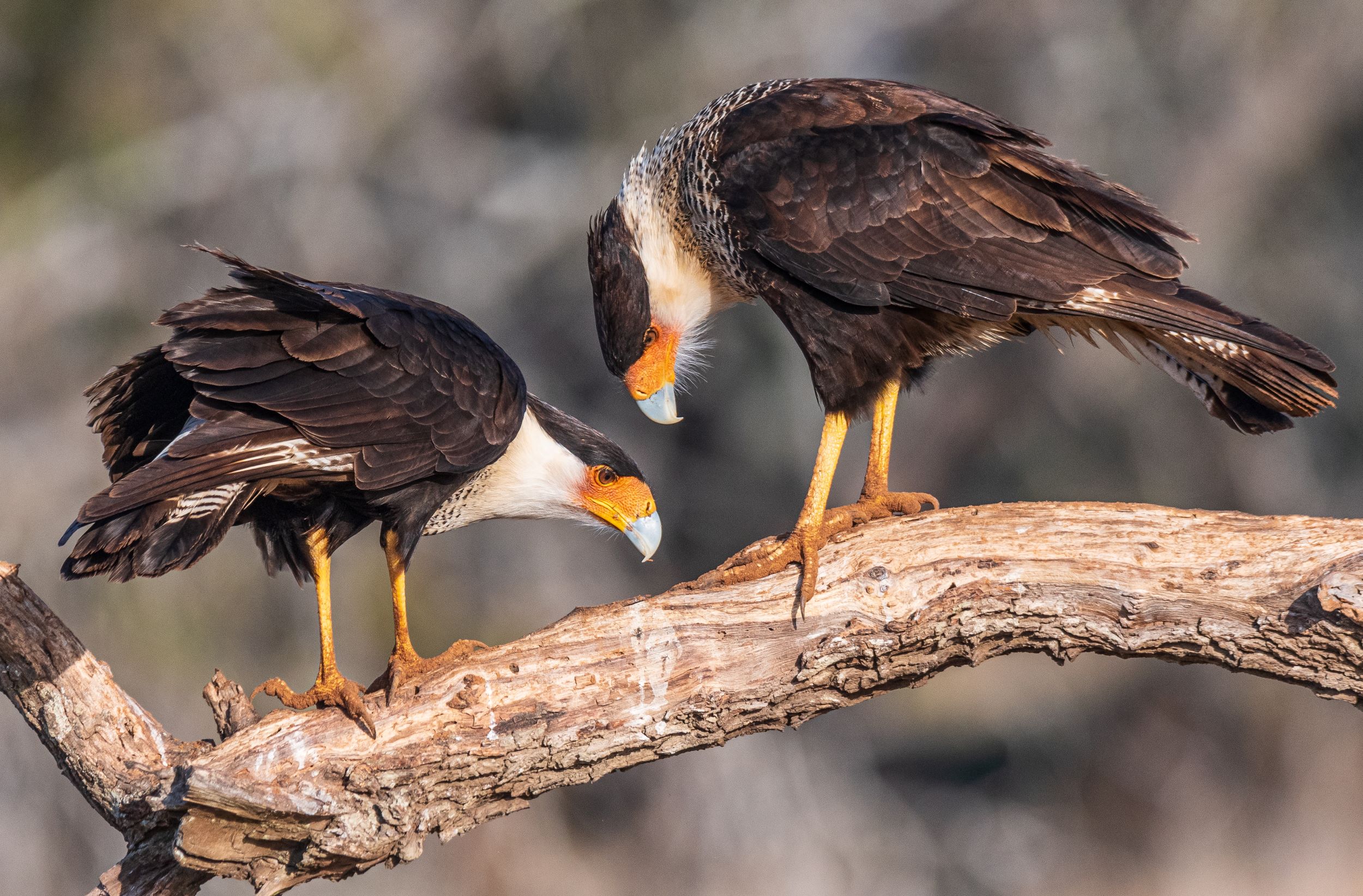
Falconiformes
The order Falconiformes is synonymous with birds of prey, encompassing a group known for their predatory skills, which includes falcons, caracaras, and kestrels. Members of this order are distinguished by their sharp, hooked beaks, powerful talons, and keen eyesight, all of which are adaptations for hunting. Falcons, the most iconic of this group, are medium-sized birds with slender, tapered wings and tails that enable them to fly at high speeds and change direction rapidly. This agility makes them adept hunters, capable of catching prey both in the air and on the ground. Their diet typically consists of smaller birds, rodents, and insects. The Peregrine Falcon, for example, is renowned for being the fastest bird in the world, capable of reaching speeds over 200 miles per hour during its hunting stoop. Caracaras, another subset of Falconiformes, are more robust and opportunistic feeders, often scavenging for carrion in addition to hunting live prey.
Behaviorally, Falconiformes exhibit a range of social structures and nesting habits. While many falcons and kestrels are solitary hunters, some species, like the American Kestrel, form monogamous pair bonds and exhibit cooperative breeding behaviors. Nesting sites vary widely among these birds; some, like many falcons, prefer to nest in high places such as cliffs or tall buildings, while others may use tree cavities or even build nests on the ground. The reproductive cycle of Falconiformes involves considerable parental investment, with both males and females typically involved in raising the offspring. These birds play a vital role in their ecosystems as apex predators, helping to control populations of rodents and other small animals and maintain ecological balance. Conservation efforts for Falconiformes are crucial, as their populations are impacted by factors such as habitat loss, pesticide use, and climate change. The successful recovery of the Peregrine Falcon from the brink of extinction, largely due to bans on DDT and other harmful pesticides, stands as a testament to the effectiveness of targeted conservation measures. The continued study and protection of Falconiformes not only preserve these remarkable birds but also contribute to the health and diversity of the ecosystems they inhabit.
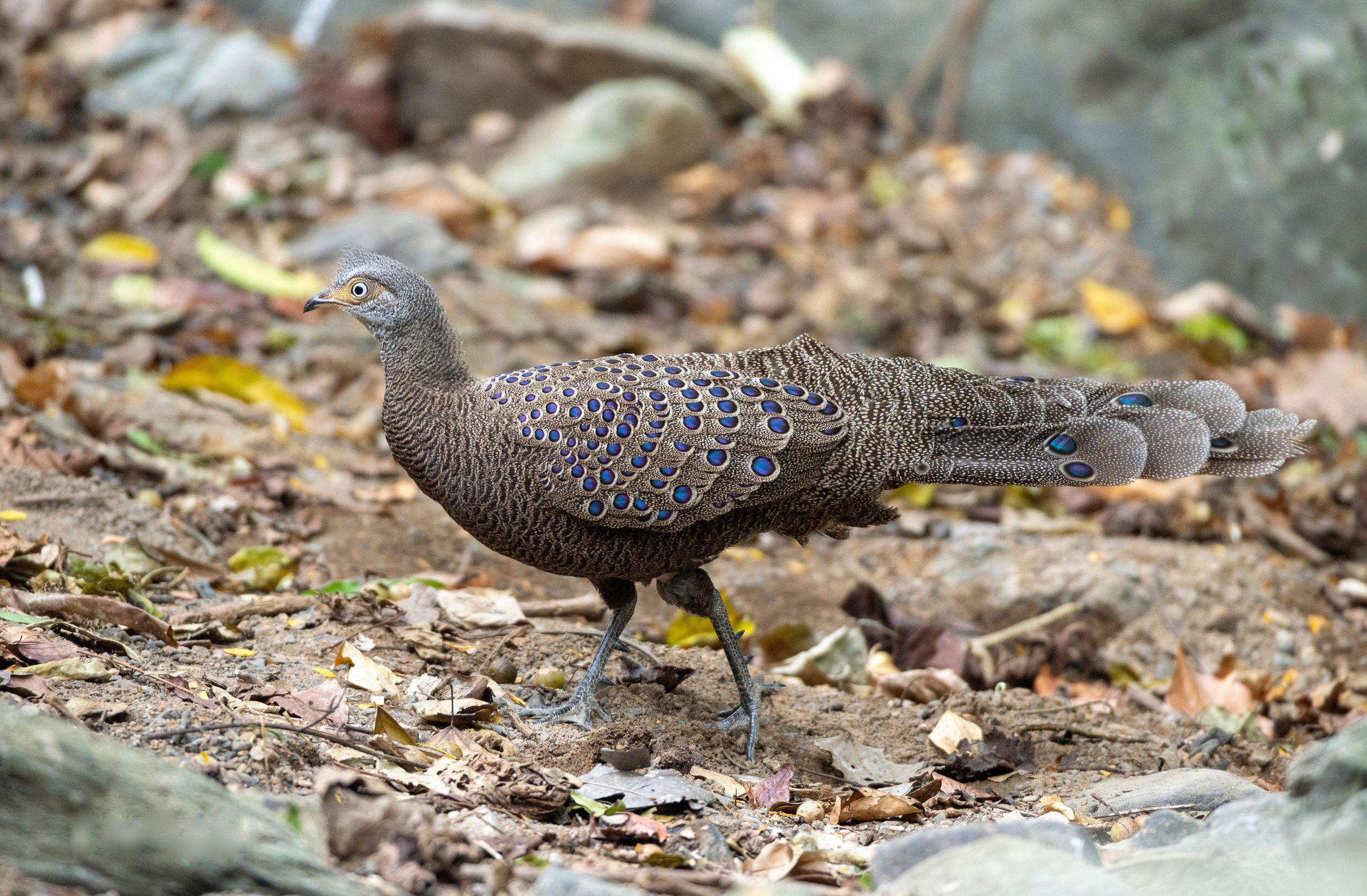
Galliformes
The order Galliformes, commonly known as game birds or landfowl, includes some of the most familiar birds such as chickens, turkeys, quails, and pheasants. These birds are characterized by their heavy, rounded bodies, short wings, and strong legs, which make them more adapted for running and scratching the ground than for sustained flight. Galliformes typically have a short, curved beak, suitable for pecking and foraging for seeds, insects, and various ground vegetation. This order represents a significant part of the bird kingdom in terms of diversity, with species varying greatly in size, color, and habitat preference. For example, the Indian Peafowl, known for the male's extravagant tail feathers, contrasts sharply with the more modestly adorned but widespread domestic chicken. Galliformes are predominantly terrestrial and can be found in a wide range of environments, from tropical rainforests and grasslands to temperate forests and mountainous regions. Their plumage often exhibits sexual dimorphism, with males typically having more ornate and colorful feathers compared to the females.
Reproductive strategies among Galliformes are diverse, with many species known for their elaborate courtship displays. These displays are particularly pronounced in species like peacocks and grouse, where males show off their plumage, perform vocalizations, and engage in physical displays to attract mates. Nests are usually simple depressions on the ground, camouflaged and protected by vegetation. Galliformes exhibit significant parental care, with some species like the precocial quails and pheasants having chicks that are relatively mature and mobile at hatching. These birds play crucial roles in their ecosystems, not only as seed dispersers and predators of insects but also as prey for larger carnivores. Their relationship with humans is long-standing and complex; while some species like the domestic chicken and turkey are vital for agriculture and food production, others are sought after for sport hunting and ornamental purposes. Conservation of wild Galliformes is important, as their habitats are increasingly threatened by human activities and environmental changes. Efforts to preserve these species and their natural habitats are essential for maintaining biodiversity and the ecological balance within their respective ecosystems.
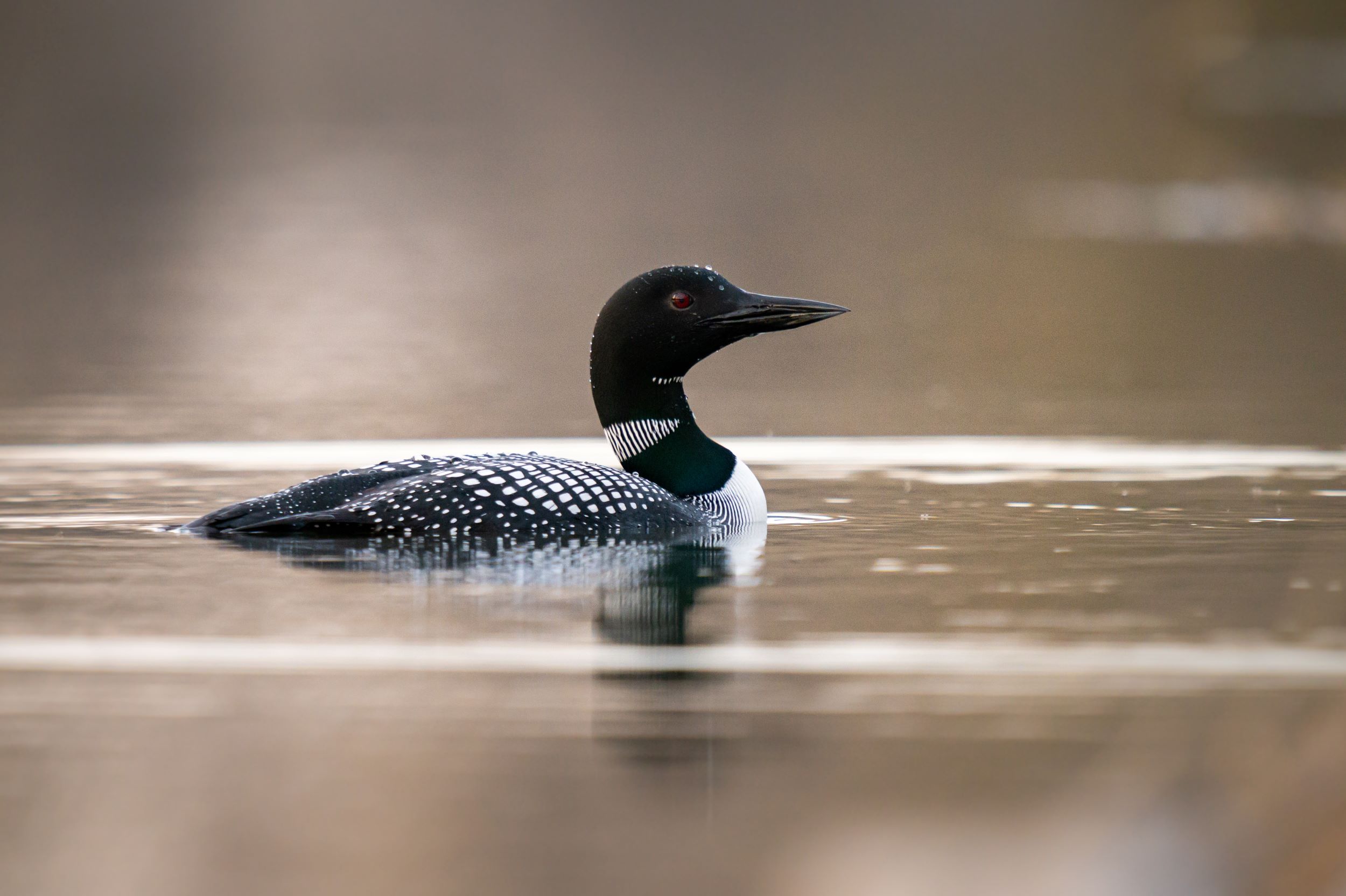
Gaviiformes
The order Gaviiformes, comprising solely of loons, represents a group of aquatic birds known for their distinct cries and exceptional diving abilities. Loons, found primarily in the Northern Hemisphere, are highly specialized for life in and around water. They possess streamlined bodies, long, pointed bills, and webbed feet positioned far back on their bodies, adaptations that make them powerful and agile swimmers. These features, however, render loons somewhat awkward on land, where they are only able to move effectively by pushing themselves along with their bellies. In the water, they are unparalleled, capable of diving to considerable depths to catch fish, their primary food source. Loons are also noted for their striking plumage; during the breeding season, they exhibit glossy black heads, checkered black-and-white backs, and striking red eyes. This vivid breeding plumage gives way to a more muted gray-brown coloration in the winter. The haunting calls of loons, varying from wails to tremolos, are characteristic sounds of northern lakes and have deep cultural and symbolic significance in many indigenous and northern communities.
Reproduction and life cycle in Gaviiformes are closely tied to aquatic environments. Loons select nesting sites along the water's edge, often on secluded islands or hidden among aquatic vegetation to avoid predators. Their nests are simple constructions made from plant material gathered from the surrounding area. Loon pairs are generally monogamous, with both parents sharing the duties of incubating the eggs and caring for the young. Once hatched, loon chicks are waterborne within a couple of days, although they may ride on their parents' backs for warmth and protection during their early weeks. Loons are known for their strong territorial instincts, with pairs vigorously defending their breeding lakes against intruders. The conservation of loons is crucial, as they are sensitive indicators of water quality and ecosystem health. Loons face threats from habitat loss, pollution (particularly from lead and mercury), and disturbances from recreational activities on lakes. Protecting the clean, quiet, and undisturbed water bodies that loons require for breeding and feeding is essential not only for their survival but also for preserving the health of aquatic ecosystems they inhabit. Their presence and well-being are indicators of environmental quality, making their conservation a priority for ecologists and nature enthusiasts alike.
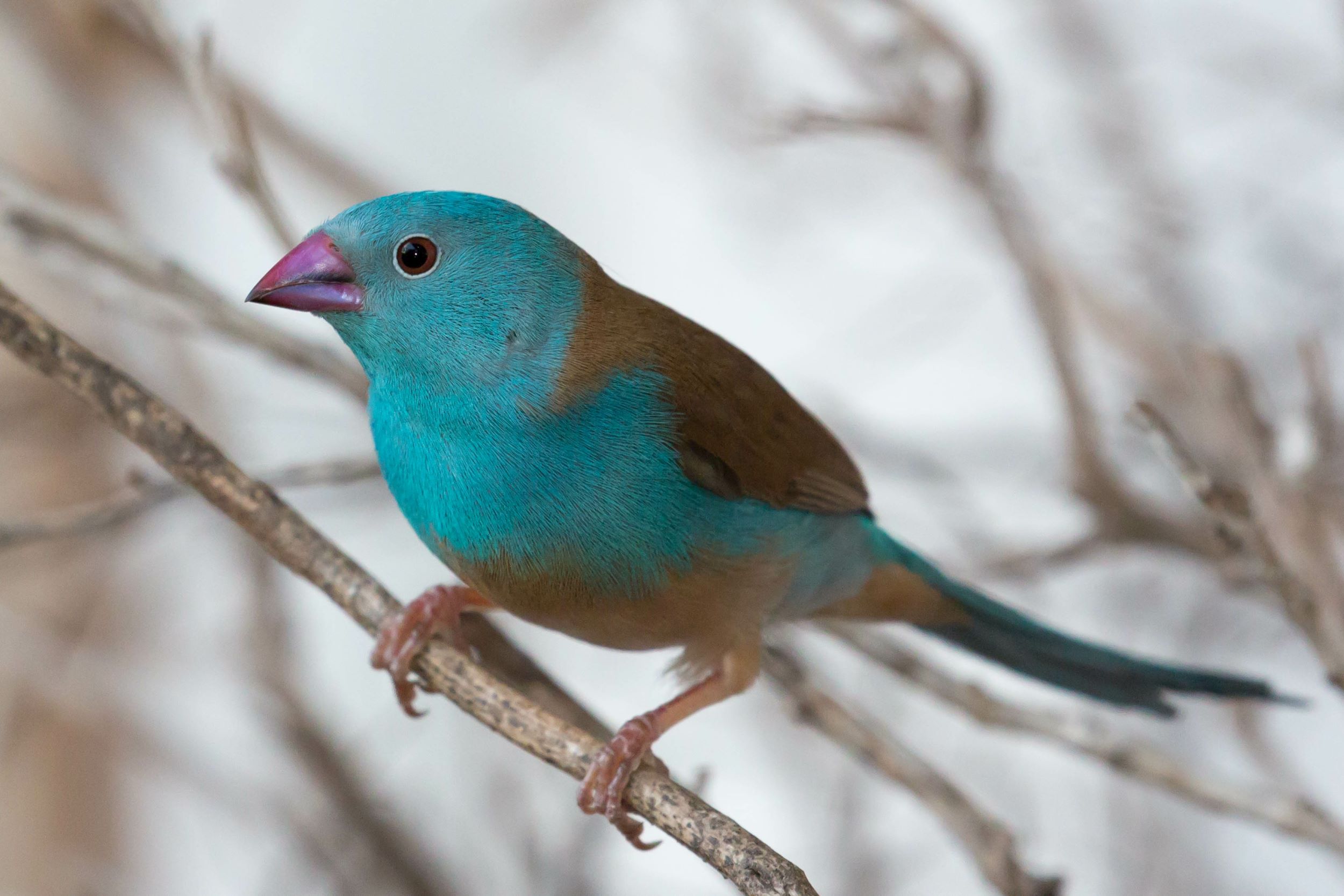
Passeriformes
The order Passeriformes, commonly known as perching birds or songbirds, represents the largest and most diverse order of birds, encompassing more than half of all known bird species. This group includes a wide array of families, such as sparrows, crows, finches, warblers, and thrushes, each exhibiting unique characteristics and adaptations. One of the defining features of Passeriformes is their anisodactyl foot arrangement, with three toes pointing forward and one backward, enabling a strong grip on branches and wires, which is crucial for their perching lifestyle. Morphologically, they vary greatly in size, color, and shape, adapted to a multitude of habitats and ecological niches. Many are known for their vocal abilities, with intricate songs and calls that are used for communication, including mating calls and territorial signals. The diverse diet of Passeriformes ranges from seeds and fruits to insects and small invertebrates, reflecting their adaptability to different environments and food sources.
Ecologically, Passeriformes play significant roles in many ecosystems. They act as pollinators, seed dispersers, and predators of insects, contributing to the balance of their habitats. Reproductive strategies among these birds are diverse; most build elaborate nests where they lay their eggs and raise their young. Parental care is a notable trait in Passeriformes, with many species exhibiting high levels of investment in their offspring, including feeding, teaching, and protecting them from predators. The order's widespread distribution, from dense forests and deserts to urban areas, highlights their adaptability and resilience. However, many Passeriformes species face threats from habitat loss, pollution, and climate change. Their presence or absence in certain areas often serves as an indicator of environmental health, making their conservation a crucial aspect of ecological studies and efforts. The study of Passeriformes not only provides insights into avian evolution and behavior but also reflects the interconnectedness of these birds with the broader environmental and ecological processes.
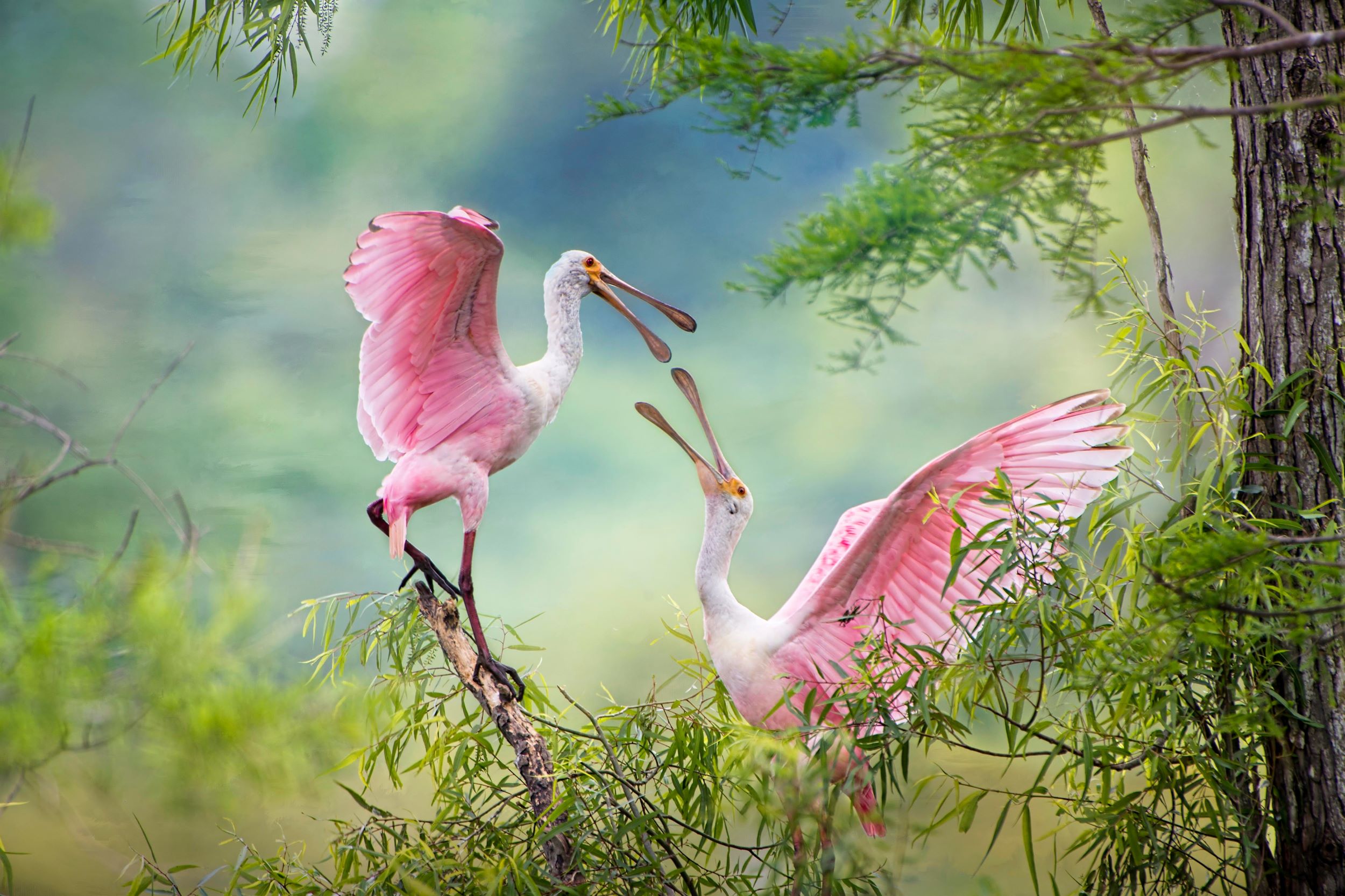
Pelecaniformes
The order Pelecaniformes encompasses a group of medium to large water birds, which includes families such as pelicans, herons, ibises, and spoonbills. These birds are characterized by their long bills and large throat pouches, particularly in pelicans, which are used for catching and draining water from their prey before swallowing. They have webbed feet, with all four toes connected by a web, a feature that sets them apart from other water birds and aids in swimming. Members of this order exhibit considerable diversity in size, habitat, and feeding behavior. Pelicans, for instance, are known for their cooperative hunting technique, working together to drive fish into shallow waters before scooping them up in their bill pouches. Herons and egrets, with their long legs and necks, are adept at stalking fish, amphibians, and insects in shallow waters, striking with lightning speed to catch their prey. Ibises and spoonbills, with their distinctive curved and spoon-shaped bills respectively, sift through mud and water to find small aquatic animals.
The breeding behavior of Pelecaniformes is equally varied and fascinating. Many species, like herons and pelicans, breed in colonies, often on isolated islands free from predators. These colonies can be spectacular sights, with numerous nests clustered in trees or on the ground. Courtship displays are elaborate, involving visual and auditory signals such as bill clattering, plumage displays, and intricate aerial dances. Nest building is a communal effort in many species, with both parents involved in constructing nests using sticks, reeds, and other vegetation. Parental care is a hallmark of the order, with both parents typically sharing responsibilities in incubating eggs and feeding the young. The young of many Pelecaniformes species are altricial, meaning they are born in an undeveloped state and require considerable care and feeding before they are able to fend for themselves.
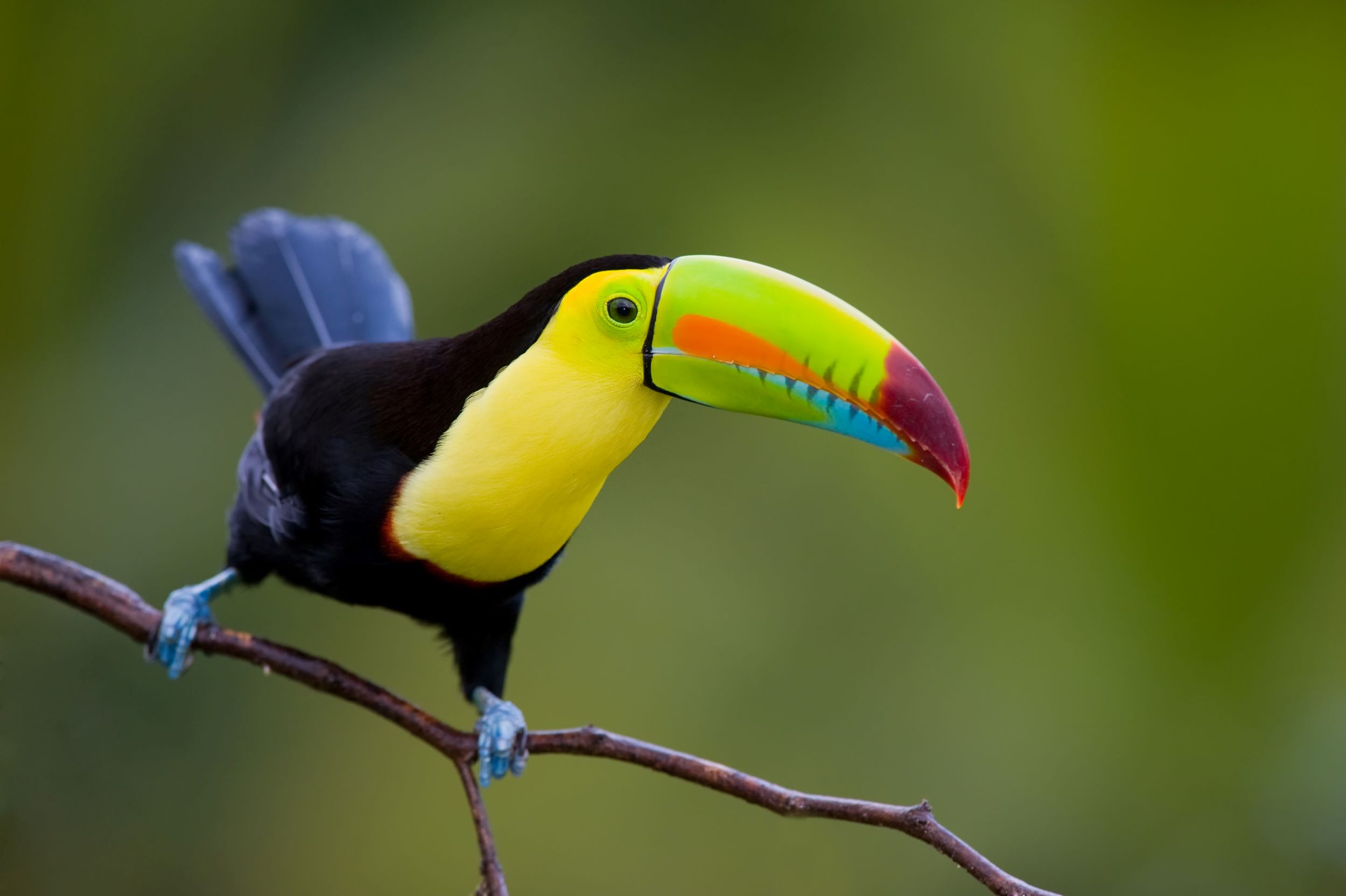
Piciformes
The order Piciformes is a diverse group of birds predominantly known for woodpeckers, but also includes toucans, barbets, and honeyguides. These birds are primarily arboreal, spending much of their lives in tree canopies. Woodpeckers, the most recognizable members of this order, are specially adapted for a life of climbing and chiseling wood. They possess strong, chisel-like beaks for boring into wood to access insects, their primary food source, and long, sticky tongues for extracting them. Their zygodactyl feet, with two toes facing forward and two backward, along with stiff tail feathers, provide stability and support while they hammer at trees. Woodpeckers are also known for their drumming behavior, which is used both for foraging and as a territorial and mating call. The physical adaptations to minimize brain damage from repetitive pecking are remarkable; these include a thickened skull and special muscle and bone structures to absorb the impact. On the other hand, toucans, with their oversized, colorful beaks, are more fruit-eaters, playing a vital role in seed dispersal for various tropical plants.
The breeding and nesting habits within Piciformes are varied but often involve excavating nests in trees or utilizing existing holes. Woodpeckers, for instance, are primary cavity nesters, meaning they create nesting holes each breeding season, which are later used by other species unable to excavate their own. This nesting behavior contributes significantly to the ecosystem by providing habitats for a variety of other species. Piciformes exhibit strong parental care, with both males and females typically involved in incubating the eggs and feeding the chicks. The order's diversity extends to its distribution, with species found in a range of habitats from tropical rainforests to temperate woodlands, highlighting their adaptability. However, this dependence on trees makes many Piciformes vulnerable to deforestation and habitat loss. Conservation efforts are therefore crucial for maintaining the biodiversity and ecological balance within their habitats. Protecting forested areas and ensuring sustainable forestry practices are essential for the survival of Piciformes and the numerous other species that rely on these habitats. The presence and health of Piciformes in an area can be a key indicator of the health of forest ecosystems, making them important species for ecological monitoring and conservation efforts.
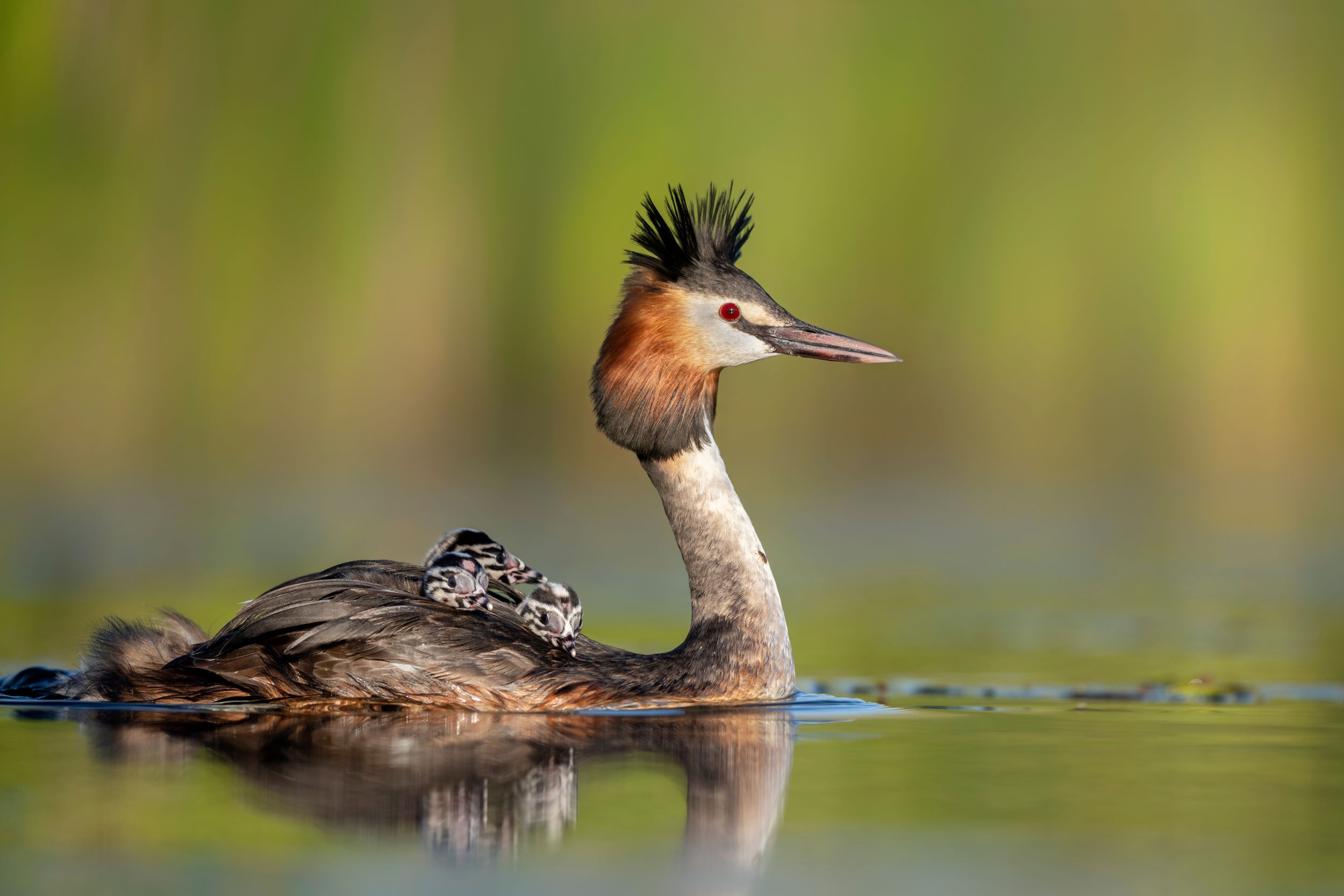
Podicipediformes
The order Podicipediformes, commonly known as grebes, encompasses a group of freshwater diving birds that are highly adapted to aquatic environments. Found across various regions of the world, grebes are known for their streamlined bodies, lobed toes, and excellent swimming and diving abilities. These adaptations make them agile and efficient underwater hunters, predominantly feeding on fish, insects, and small aquatic invertebrates. Unlike most other water birds, grebes have their legs positioned far back on their bodies, a trait that aids in propulsion through water but renders them somewhat awkward and ungainly on land. As a result, they are rarely seen on dry ground, preferring to stay in or near water bodies. Grebes exhibit a range of sizes and plumage patterns, often with ornate breeding plumage and elaborate courtship displays. Some species, like the Western Grebe, are known for their spectacular mating dances, which include synchronized swimming and rushing across the water's surface.
Reproductive behavior in grebes is characterized by strong pair bonds and shared parental responsibilities. Nesting typically occurs in dense aquatic vegetation, where grebes construct floating nests anchored to submerged plants. This unique nesting strategy keeps their eggs and chicks safe from land predators. Both parents are involved in the building of the nest, incubation of the eggs, and feeding and care of the young. Notably, grebe chicks are precocial, meaning they are relatively mature and mobile from the moment of hatching. They are often seen riding on their parents' backs, tucked among the feathers for warmth and protection. Conservation of grebes is crucial, as they are sensitive indicators of the health of freshwater ecosystems. Their reliance on specific aquatic habitats makes them vulnerable to environmental changes such as water pollution, habitat destruction, and fluctuations in water levels. Efforts to protect and restore wetlands, lakes, and other freshwater habitats are essential not only for the survival of grebes but also for the preservation of the biodiversity and ecological integrity of these aquatic systems. The well-being of grebe populations often reflects the overall health of their environments, highlighting the importance of maintaining clean and sustainable freshwater ecosystems.
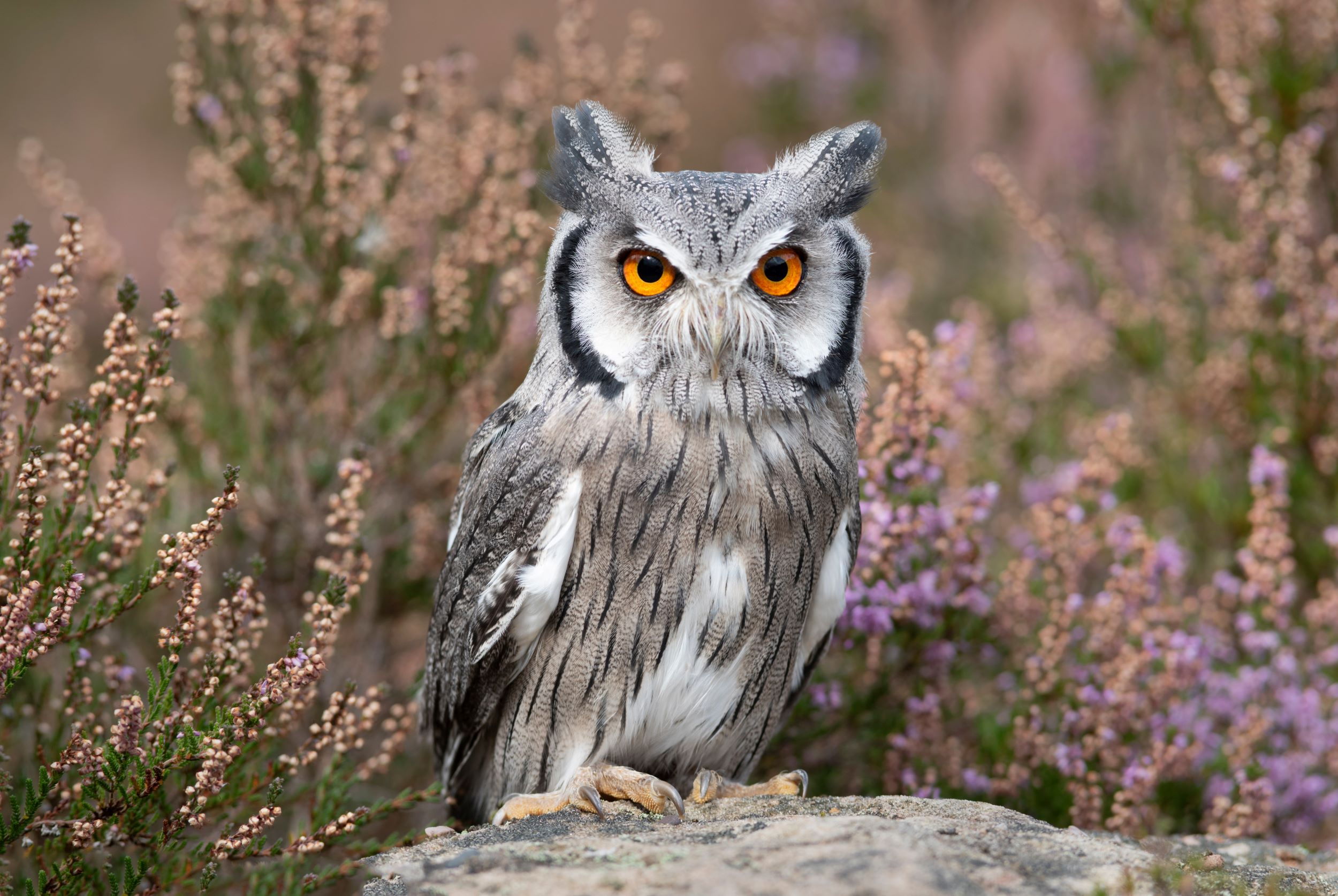
Strigiformes
The order Strigiformes, encompassing owls, is a group of predominantly nocturnal birds of prey known for their distinctive features and specialized hunting skills. This order is divided into two main families: the Strigidae, or typical owls, and the Tytonidae, which includes barn owls. Owls are characterized by their large heads, forward-facing eyes, and flat faces surrounded by a disc of feathers that helps to direct sound to their ears. This facial disc, along with their asymmetrical ears, provides owls with exceptional hearing, crucial for locating prey in the dark. Their eyes are large and adapted for night vision, though they are fixed in their sockets, requiring owls to rotate their heads up to 270 degrees for a wider field of view. The plumage of owls is typically soft and muted, allowing for silent flight—an adaptation critical for stealthily approaching prey. Owls predominantly feed on small mammals, birds, and insects, and their hunting strategy often involves perching silently before swooping down on their prey.
The breeding and nesting habits of Strigiformes vary among species, but many do not build nests of their own, instead opting to use existing structures like tree cavities, abandoned nests, or even buildings and barns. Owls generally lay a small number of eggs, and both parents typically share in the incubation and rearing of the young. The young are altricial, meaning they are born helpless and require significant parental care before they can fend for themselves. Owls play a vital role in their ecosystems as controllers of rodent and insect populations, contributing to the balance of these environments. However, they face numerous threats, including habitat loss, pesticide use, and collisions with vehicles and buildings. The conservation of owls is crucial, as their presence is often an indicator of the overall health of their ecosystems. Efforts to protect their habitats and address threats they face are essential for the preservation of these enigmatic birds. The cultural significance of owls is also notable, as they have featured prominently in folklore and mythology around the world, often symbolizing wisdom, mystery, or death. This cultural reverence further underscores the importance of conserving Strigiformes and maintaining the natural balance they help uphold.
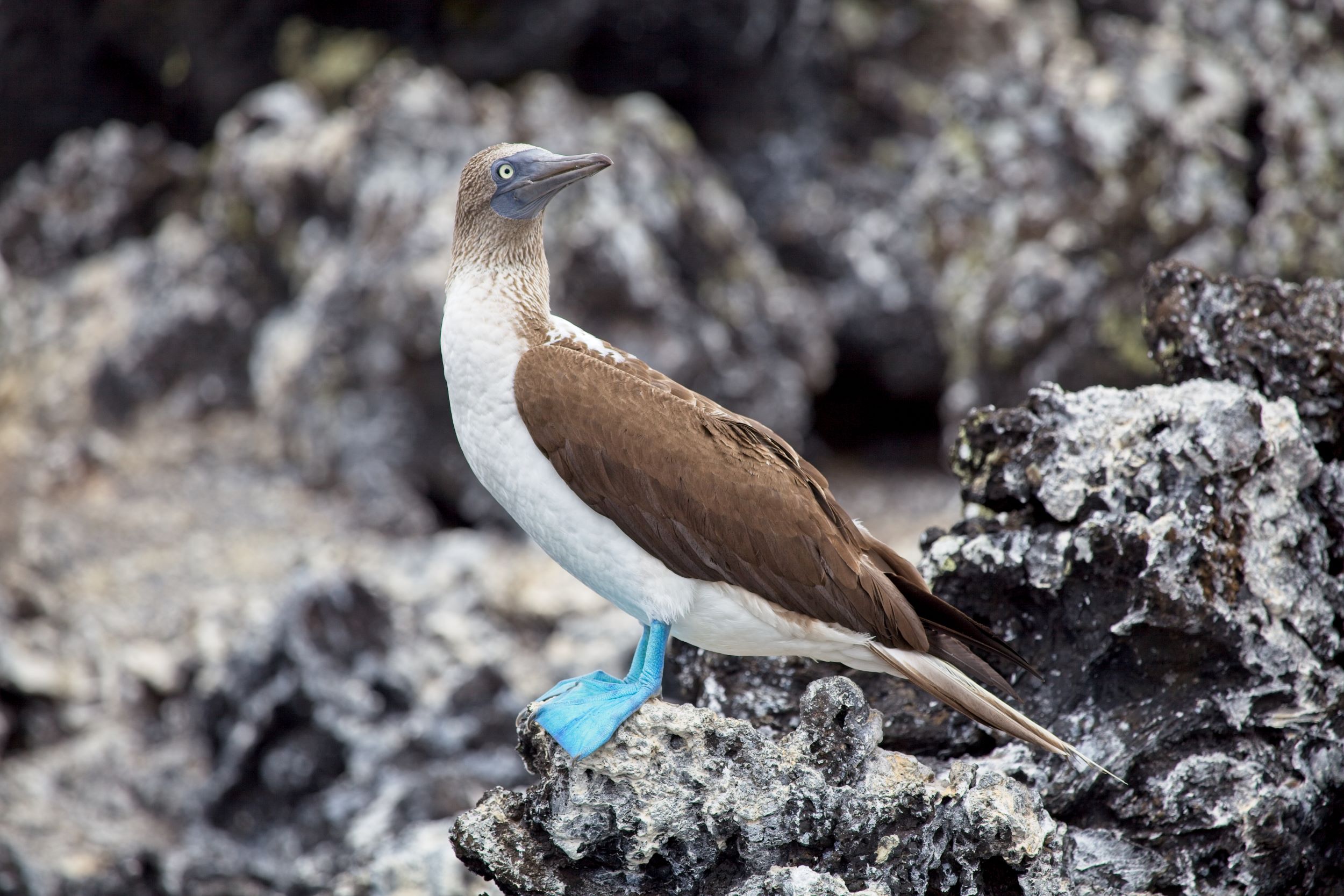
Suliformes
The order Suliformes is a relatively recent taxonomic grouping that includes four families of seabirds: the frigatebirds, gannets and boobies, cormorants and shags. These birds are primarily marine and are well-adapted to an aquatic life, spending much of their time at sea except during breeding periods. Members of this order are characterized by their long, narrow wings and strong flying abilities, which allow them to travel great distances over the ocean. Frigatebirds, known for their large size and distinctive forked tails, are particularly adept at soaring and can stay airborne for weeks. They are also notable for their remarkable courtship display, where males inflate their red throat pouches to attract females. Gannets and boobies are renowned for their spectacular diving skills, plunging from great heights into the sea at high speeds to catch fish. They have air sacs under their skin in their face and chest, which act like bubble wrap, cushioning the impact with the water.
Cormorants and shags, though part of the same order, exhibit different behaviors. Cormorants are found in both marine and freshwater habitats and are excellent divers, using their strong legs and webbed feet to chase fish underwater. They are often seen perched with their wings outstretched to dry, as their feathers are not as waterproof as those of other seabirds, allowing them to dive more efficiently. Shags, which are similar to cormorants but generally have more slender bills and plumage differences, also show excellent diving capabilities. Across the Suliformes, breeding strategies vary, but many species are colonial nesters, often breeding on isolated islands where large groups come together to raise their young. These colonies can be vital for the survival of certain species, providing safety in numbers from predators. The nests of Suliformes are typically constructed with sticks and located on cliffs, trees, or ground, depending on the species.
Families in the order Suliformes:
- Anhingidae
- Fregatidae
- Phalacrocoracidae
- Sulidae